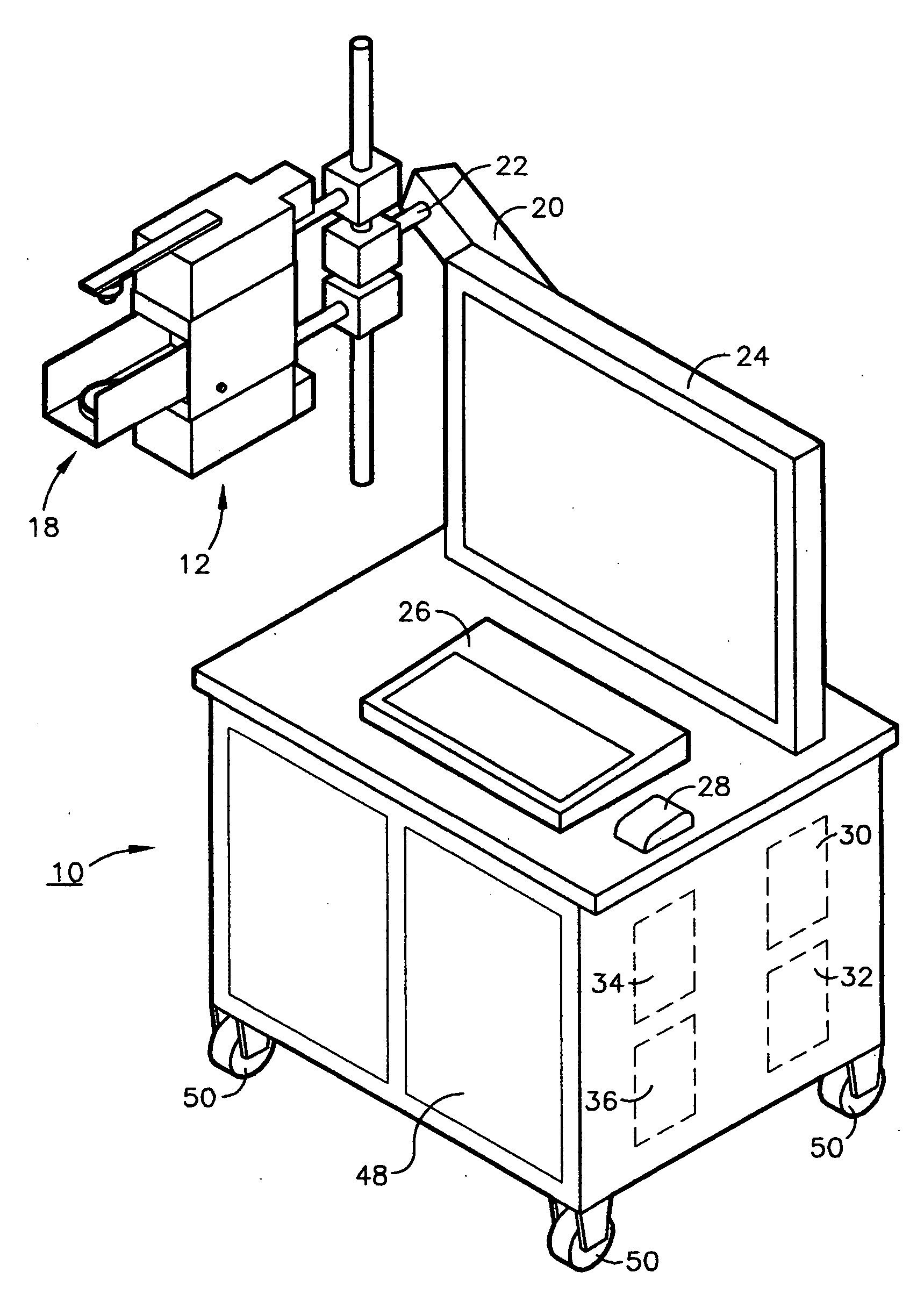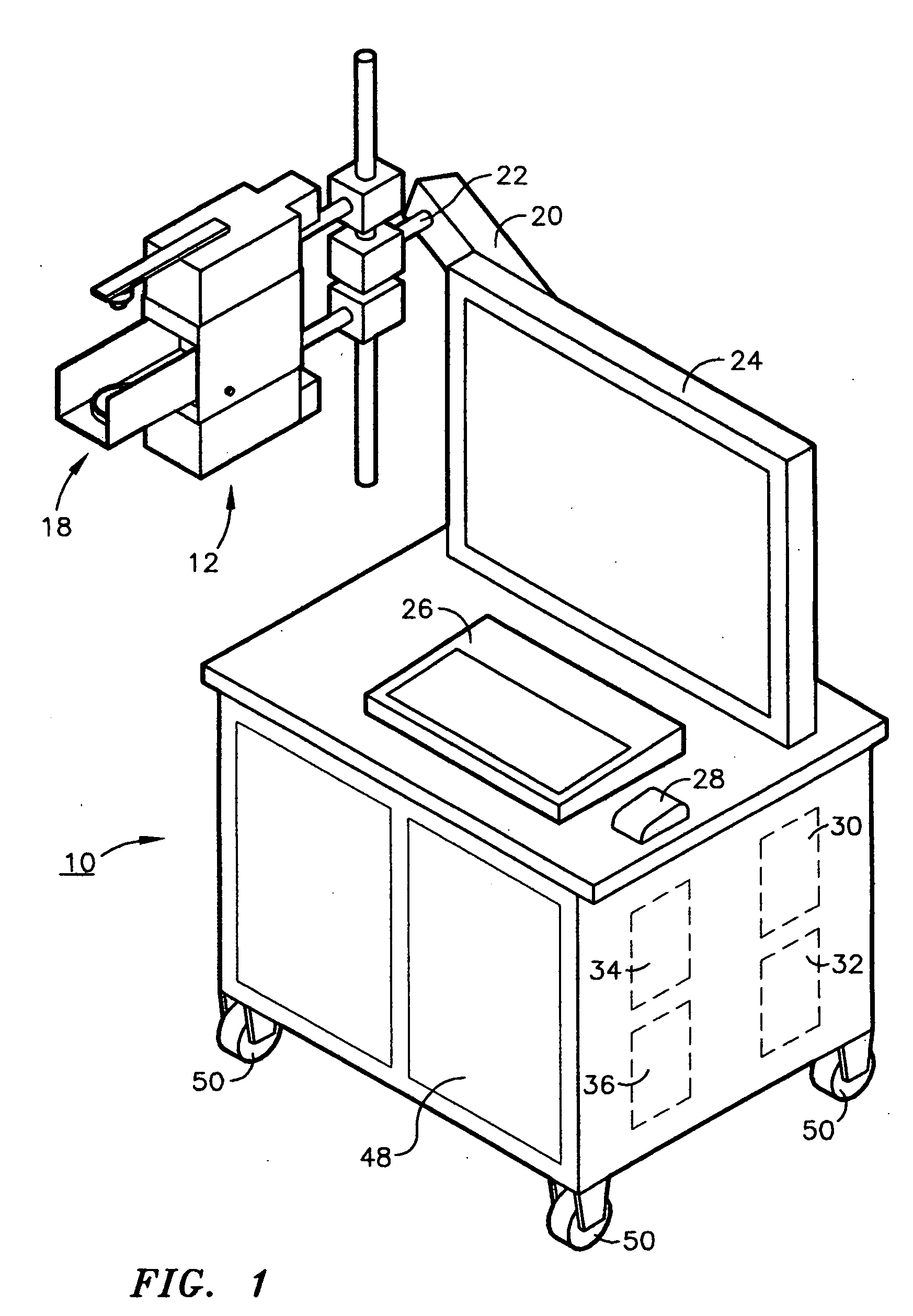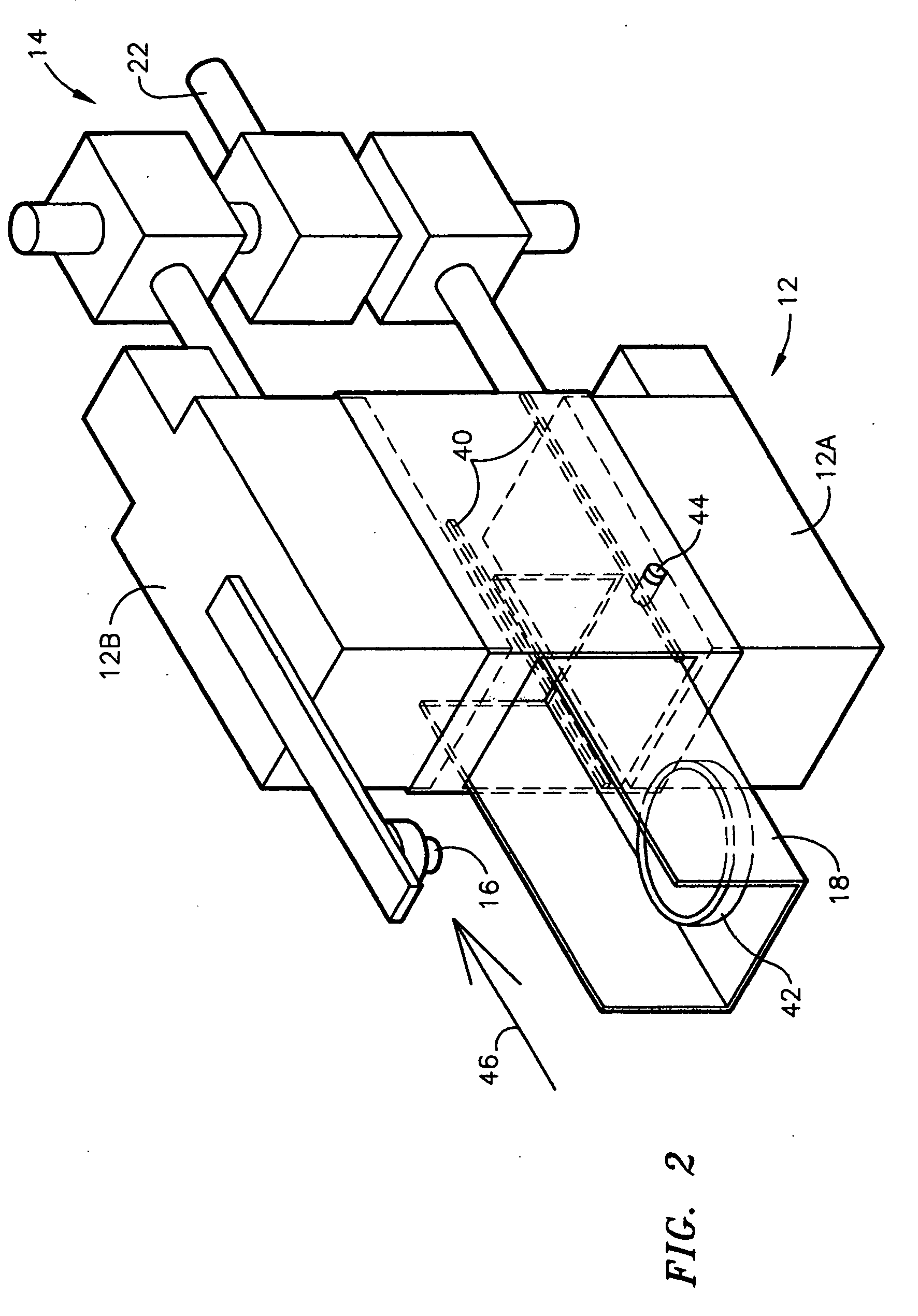Positron emission tomography and optical tissue imaging
a tomography and optical tissue technology, applied in tomography, material analysis using wave/particle radiation, instruments, etc., can solve the problems of increasing morbidity, increasing the overall cost of the procedure, and adding substantial idle time to the surgery, so as to reduce the total time needed for the procedure and the number of iterations. , the effect of fast feedback
- Summary
- Abstract
- Description
- Claims
- Application Information
AI Technical Summary
Benefits of technology
Problems solved by technology
Method used
Image
Examples
Embodiment Construction
Positron Emission Tomography with F-18 fluoro-deoxyglucose (FDG) has been shown to be a valuable tool for imaging various cancers. Many cancers demonstrate increased glucose metabolism compared to normal tissues. When FDG is injected intravenously, it concentrates in tumors allowing them to be imaged. In the protocol used in connection with the imaging system of the present invention, one hour before surgery, the patient is injected with a small amount of a positron emitting radiopharmaceutical such as FDG. When the surgeon has removed the cancerous lesion, he or she will mark the resected tissue and the surgical bed with dyes to map orientation for analysis of margins.
The Positron Emission Tomography (PET) Tissue Sample Imager of the present invention uses a pair of small PET cameras to image radiotracer uptake in the resected tissue sample. The cancerous tissue will typically be identified as a focal area or areas of increased radiotracer accumulation within the sample. The PET Ti...
PUM
 Login to View More
Login to View More Abstract
Description
Claims
Application Information
 Login to View More
Login to View More - R&D
- Intellectual Property
- Life Sciences
- Materials
- Tech Scout
- Unparalleled Data Quality
- Higher Quality Content
- 60% Fewer Hallucinations
Browse by: Latest US Patents, China's latest patents, Technical Efficacy Thesaurus, Application Domain, Technology Topic, Popular Technical Reports.
© 2025 PatSnap. All rights reserved.Legal|Privacy policy|Modern Slavery Act Transparency Statement|Sitemap|About US| Contact US: help@patsnap.com



